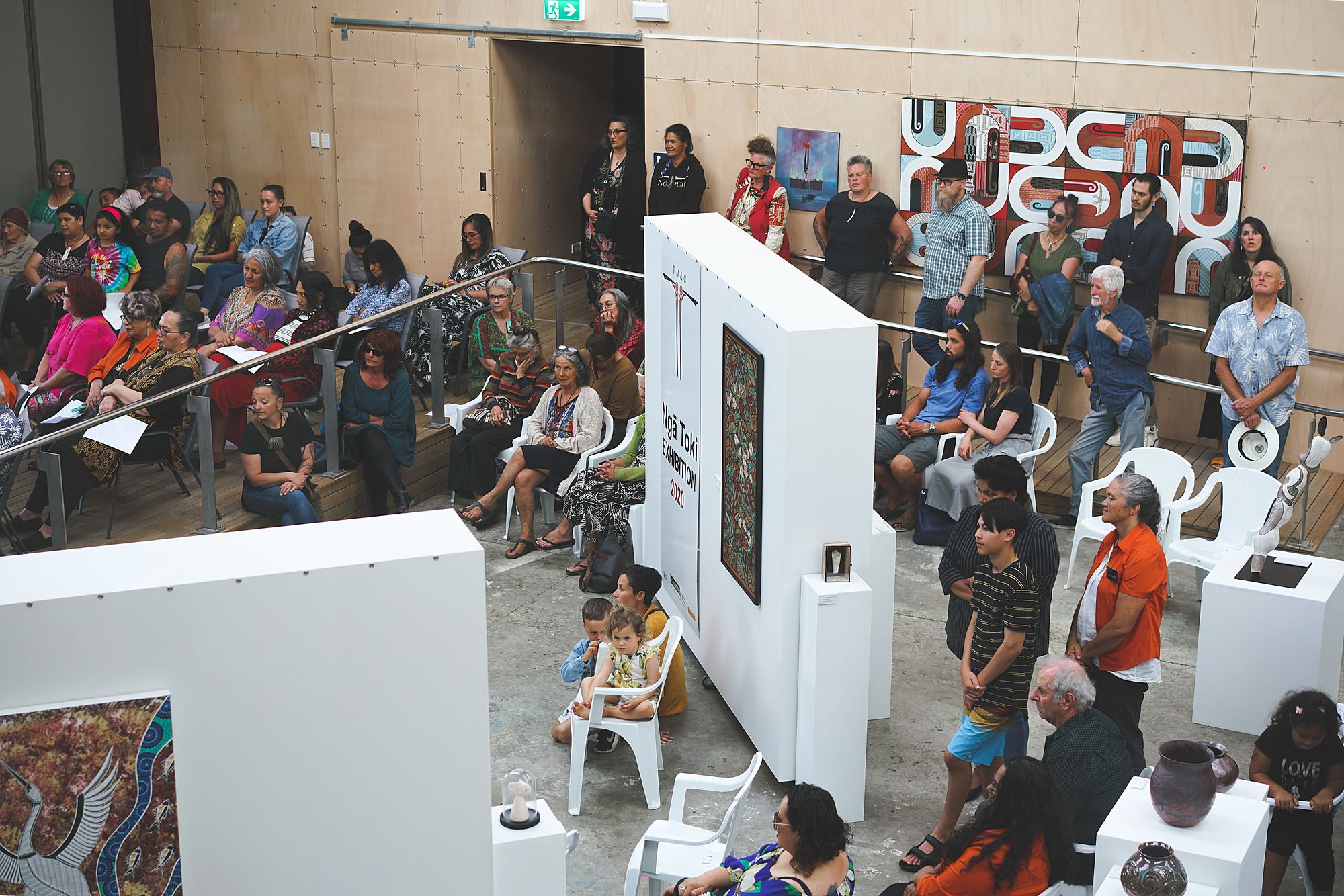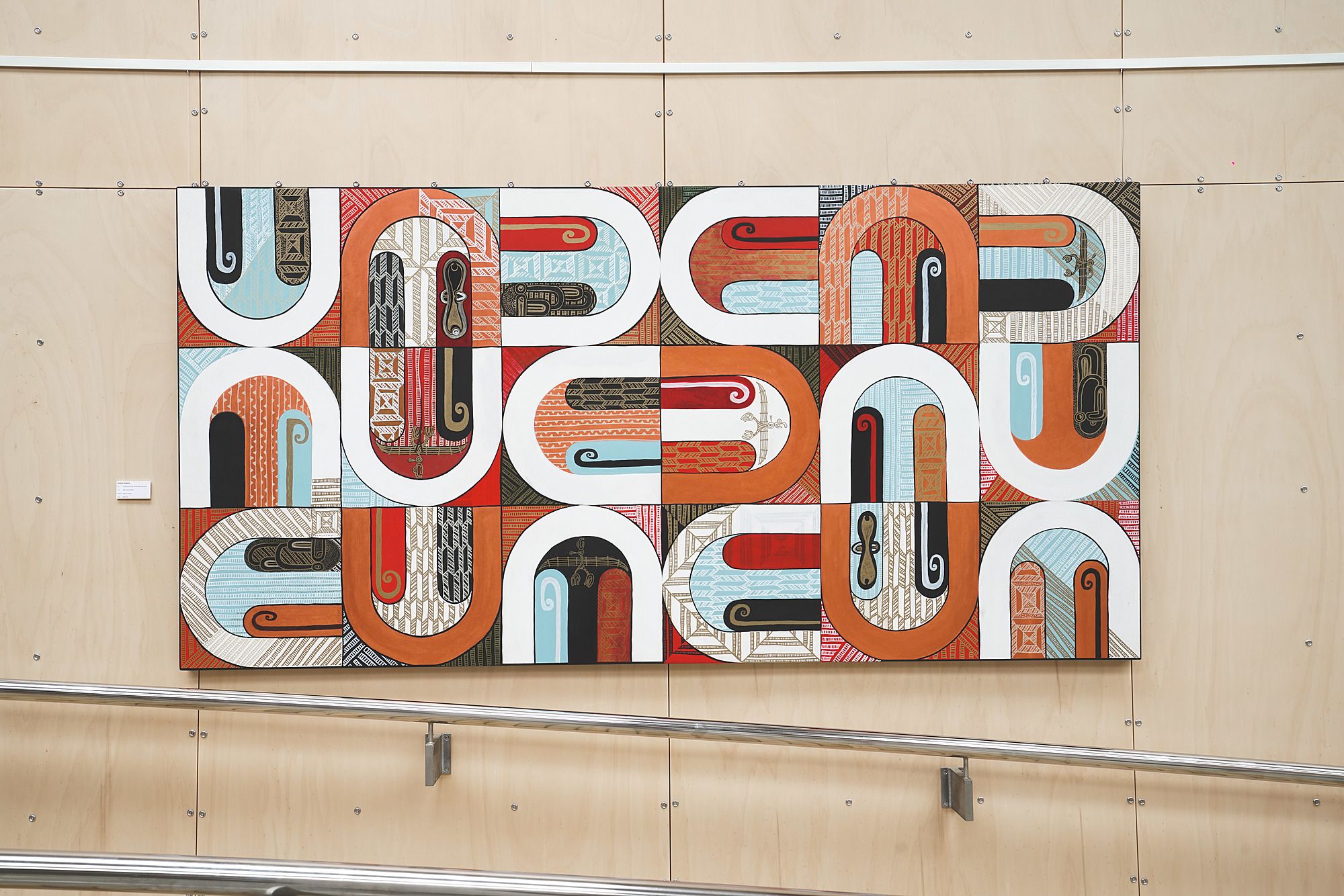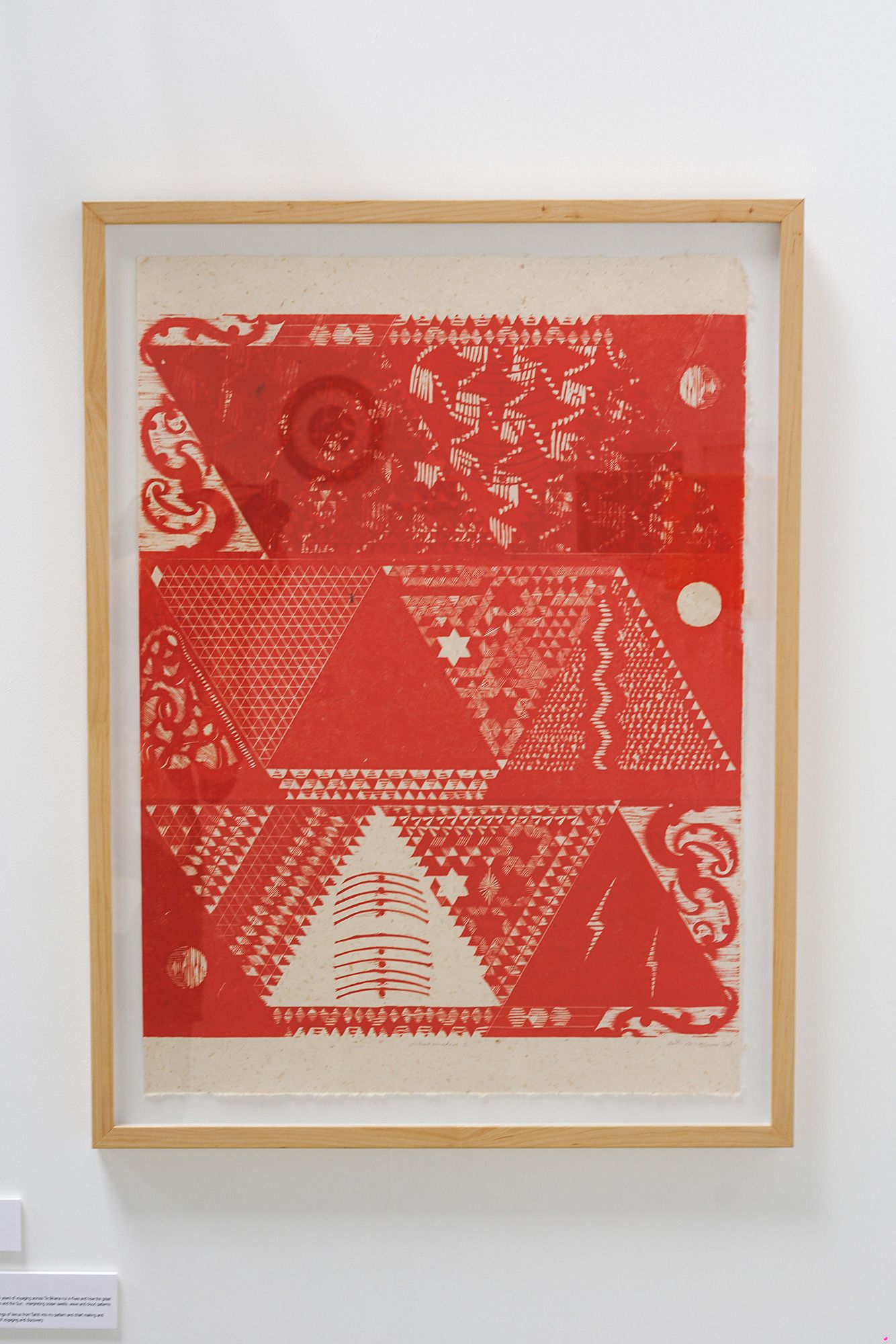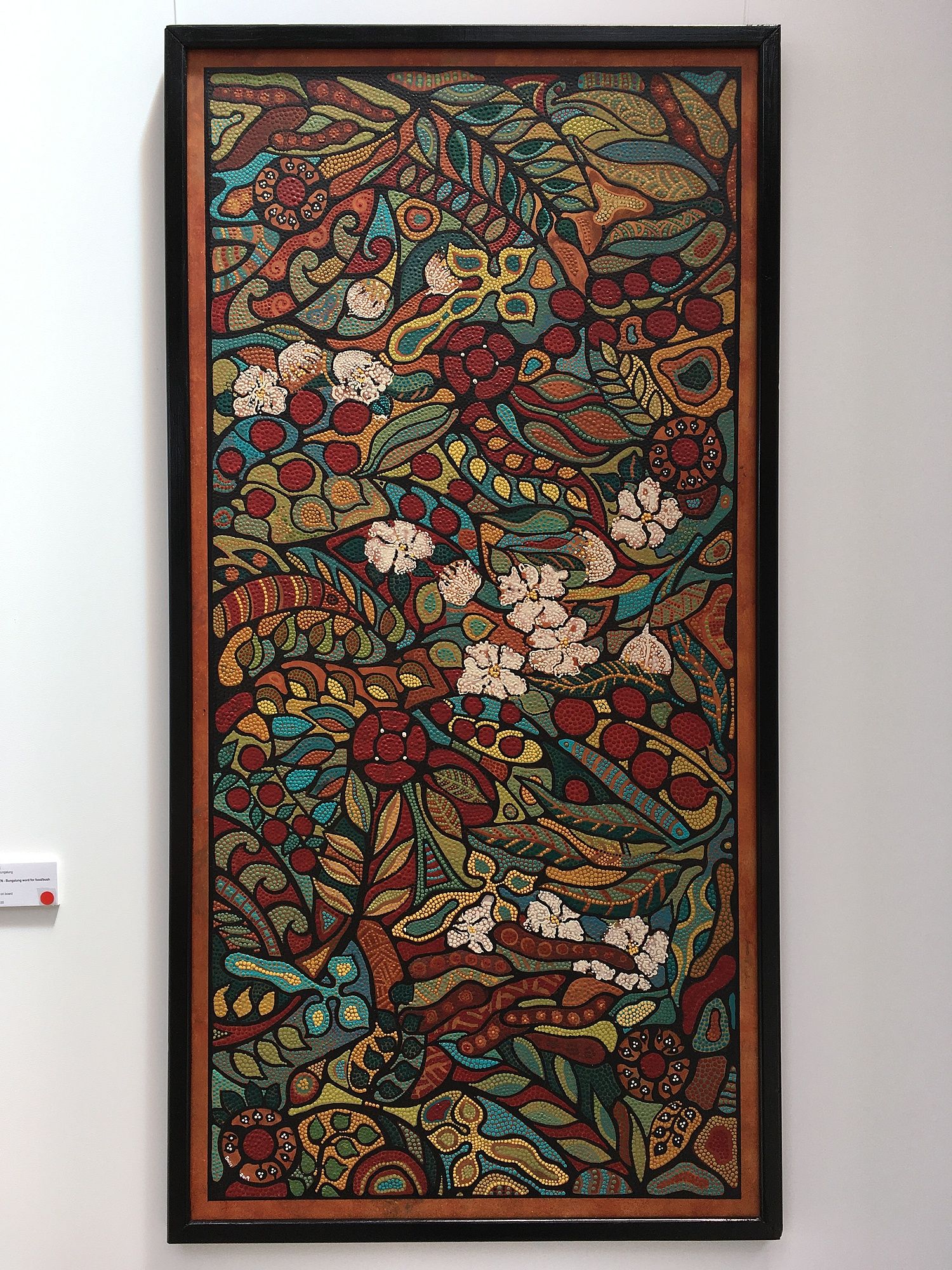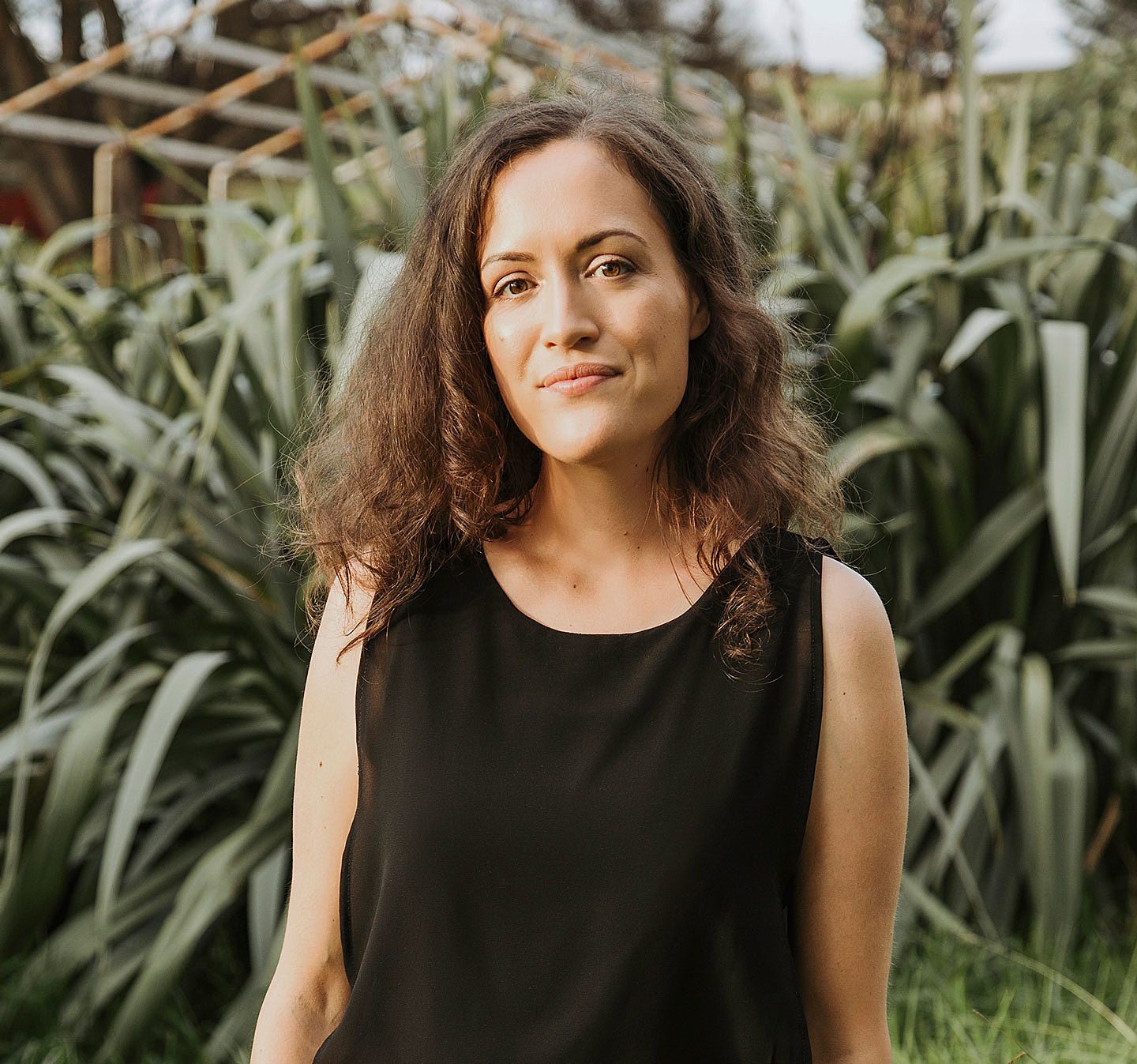From Ngāpuhi to Bungalung: A Review of Ngā Toki
Indigenous artists unite under the korowai of Te Taitokerau Māori Artists Collective. Jade Kake responds to Ngā Toki at Hīhīaua Cultural Centre.
We gather on the deck of Hīhīaua Cultural Centre in Whangārei, named for an ancestral fishing village, a māhinga kai for hīhī and aua. The building itself sits on reclaimed land, 300 metres or so from the original site, taken under the Whangārei Harbour Act 1907. There are familiar faces, kihi and a strong hau kāinga turnout, most gathered are Māori. As we comment on hapū politics and local gossip, grey clouds threaten, and we’re grateful for a break in the rain and the unpredictable spring weather.
The kāranga begins and we file in, wāhine first and then tāne. There is a response to the call from one of the tāne, as is customary in Ngāpuhi. To the left is an area for manuhiri, inside the doors and on the raised platform area. We spill out, down the ramp and out onto the floor – into the exhibition space. Light filters in through clear roof sheeting, it illuminates the artworks in the floor area. The building, Hīhīaua Cultural Centre, has just won a national award for public architecture, and it’s gratifying to see a Māori kaupapa recognised in this way.
Te Parawhau sit on the taumata, inside and to the right of the door. My whanaunga Jona Nathan (nō Te Parawhau) is the kaikarakia, and my whanaunga Lenny Murupaenga (Ngāti Kuri), Fred Tito and Daniel Hauraki (both Te Parawhau) are our kaikōrero. Margaret Hauraki is our kaiwaiata. When it’s time for the manuhiri to speak, BJ Natanahira (Te Rarawa, Te Aupouri) from Te Taitokerau Māori Artists Collective responds. A video message from respected elder Howard (Joe) Butler (Gooreng Gooreng, Gurang, Gangalu-Iman) is played, in place of him being able to attend in person, due to our countries’ Covid-19 travel regulations. Bernard Makoare (Ngāti Whatua, Te Rarawa) is the final speaker for the manuhiri side, and then the mauri is handed back to Daniel Hauraki to conclude. An inquisitive pēpi grips the side of my chair, and plays peek-a-boo with my mete sitting next to me. The kaupapa – like most Māori kaupapa – is whānau friendly, and there are lots of tamariki and tai tamariki in attendance.
A veritable who’s who of the Tai Tokerau art world
Ngā Toki is presented by Te Taitokerau Māori Artists Collective, a group of more than 100 artists who have worked and exhibited together since 2008. They are responsible for Toi Ngāpuhi, the large-scale art exhibition associated with the biennial Ngāpuhi Festival, a veritable who’s who of the Tai Tokerau art world. Most of the artists are from Ngāpuhi or Te Hiku iwi, each tohunga in their own right. The works presented are in a range of scales and media, from body adornment in silver and bone, diminutive sculptures in clay and timber, sets of woodcut prints and larger wall-mounted paintings in acrylic on board. The show is necessarily eclectic and, as with any group show, there’s a risk of it not coming together. Here, the calibre of the work, the shared whakapapa of the artists, and the unity of kaupapa ensure the show is cohesive and coherent.
Andrea Hopkins, Ngā Kākano Maha, 2019–2020
Andrea Hopkins’ (Parehauraki, Ngāti Paoa, Ngāti Whanaunga, Marutuahu) Ngā Kākano Maha (acrylic on board) dominates the space due to the large scale of the work, and the use of colour – red, ochre, light blue, gold, white and black. The blue used reminds me of blue aumoana clay, and the ochre colour is similar to kōkōwai. The work is laid out in a square grid pattern but largely structured by the use of distinctive curved shapes reminiscent of hands from traditional whakairo, the contrast of linear and curvilinear. Manu aute, koru and (a pattern that I think is a variant on) rau kūmara stand out as familiar motifs. The pattern is structured, allowing for variation, and plays with positive and negative space. The work is multi-layered, with a multi-dimensional logic.
Faith McManus, Whakamāhere II, 2018
Faith McManus’s (Ngāpuhi, Ngāi Takoto) Whakamāhere II (woodcut on harakeke paper) links us across Moana-Nui-ā-Kiwa, referencing Pacific navigation, patterns and chart making. The triangular patterns remind me of the aronui pattern found in tāniko, and similar patterns seen throughout the Pacific. The depiction of the star and moon includes ngutu kākā kōwhaiwhai patterns, anchoring us here in Aotearoa. The use of grid and triangles alongside more organic forms provides a nice contrast, the work appearing monochromatic at first glance. On closer inspection, the layering of darker red over a lighter red ink creates the impression of looking at the night sky through clouds, the moon half obscured.
The other special dimension to the exhibition is the inclusion of Indigenous artists from Te Whenua Moemoeā. The show marks the tenth anniversary of an Indigenous creative exchange, which I learn in snippets through the pōwhiri and Howard (Joe) Butler’s address, and more fully from a corner of the exhibition dedicated to documenting the exchange. With this whakamaumahara comes sadness and recognition of those who have passed. Manos Nathan and Colleen Waata Urlich have been central figures in the collective, in the exchange with Australian Indigenous artists and in toi Māori more generally, as well as a celebration of enduring friendships, collaboration and cross-cultural exchange.
Bindi Waugh, Nanayn – Bungalung word for food / bush tucker, 2019
Bindi Waugh’s (Iman, Bungalung) acrylic on board painting Nanayn – Bungalung word for food / bush tucker is tactile, the raised dots almost inviting you to touch (I don’t). The work is dense and sumptuous, and leaves, berries, pods and flowers are represented without background, patterned with dots and bands. The colours are earthy but bold – red, orange, yellow, green, brown and white. I imagine those familiar with the bush tucker depicted would immediately recognise the forms, much as those who hold intimate knowledge of the land can recognise kai in the bush, the ngāhere. I feel a personal connection to this piece due to my upbringing as a settler on Bungalung country. There’s a kind of symmetry to this work by a Bungalung artist, presented on the land to which I whakapapa.
There’s a real sense of whakamana here – Indigenous artists, in a kaupapa Māori space, under the korowai of mana whenua Te Parawhau, attended and supported by the Māori community. The work, and the mana of the artists, is upheld, in a myriad of details – the pōwhiri process, the care taken in presenting the exhibition, through to the sale prices of the artworks. After carefully perusing the exhibition and speaking with some of the artists, we share a kai and an inu. We indulge in a little more hapū gossip, before slipping out into the early evening.
